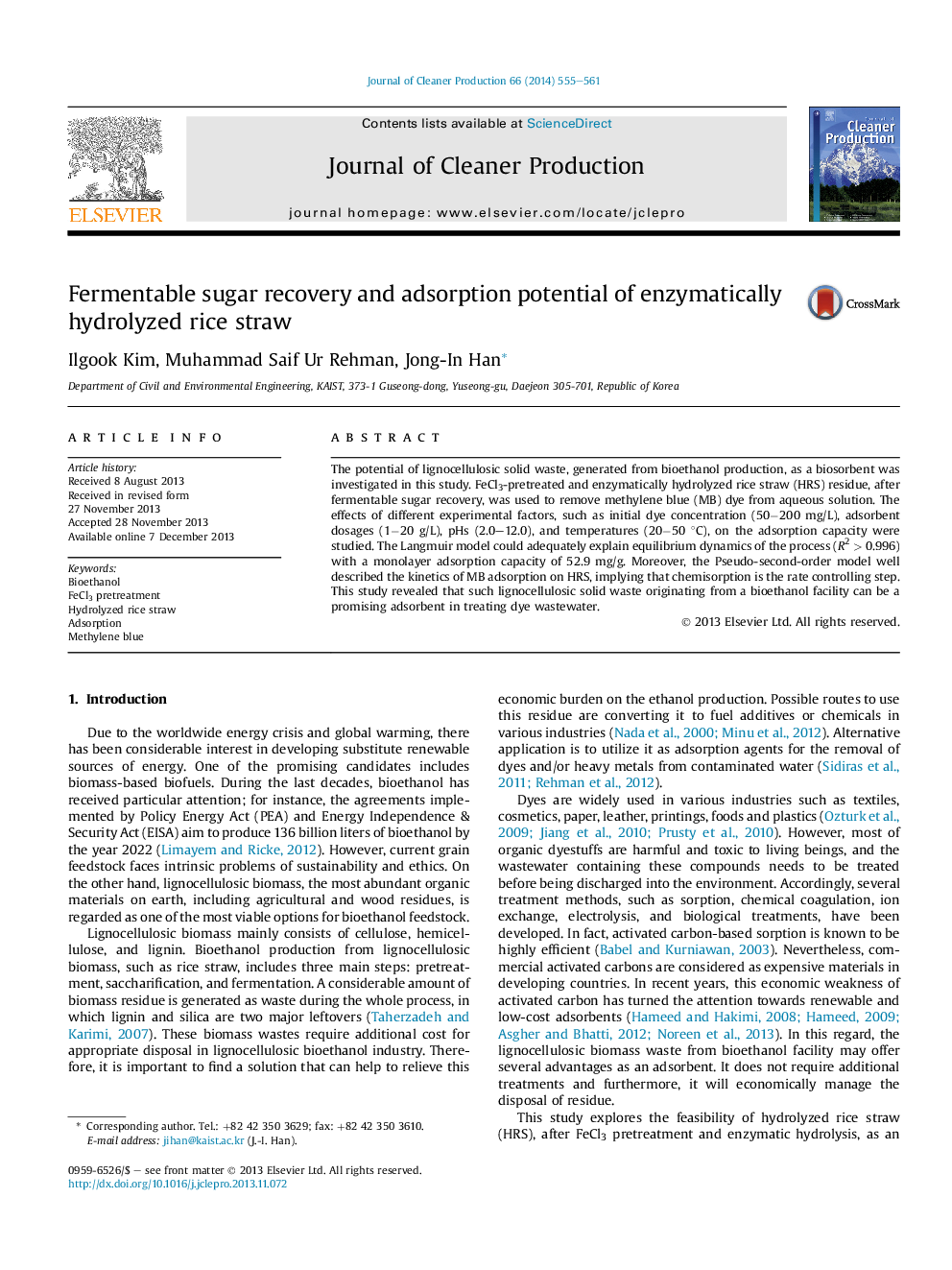| کد مقاله | کد نشریه | سال انتشار | مقاله انگلیسی | نسخه تمام متن |
|---|---|---|---|---|
| 1745023 | 1522180 | 2014 | 7 صفحه PDF | دانلود رایگان |
• The residues from the production of cellulosic bioethanol were used as adsorbents.
• Hydrolyzed rice straw pretreated with FeCl3 showed the highest dye removal efficiency.
• The equilibrium adsorption was best described by the Langmuir isotherm model.
• The experimental data fitted well with pseudo-second-order kinetic model.
• Proposed system could reduce overall bioethanol process cost.
The potential of lignocellulosic solid waste, generated from bioethanol production, as a biosorbent was investigated in this study. FeCl3-pretreated and enzymatically hydrolyzed rice straw (HRS) residue, after fermentable sugar recovery, was used to remove methylene blue (MB) dye from aqueous solution. The effects of different experimental factors, such as initial dye concentration (50−200 mg/L), adsorbent dosages (1−20 g/L), pHs (2.0–12.0), and temperatures (20−50 °C), on the adsorption capacity were studied. The Langmuir model could adequately explain equilibrium dynamics of the process (R2 > 0.996) with a monolayer adsorption capacity of 52.9 mg/g. Moreover, the Pseudo-second-order model well described the kinetics of MB adsorption on HRS, implying that chemisorption is the rate controlling step. This study revealed that such lignocellulosic solid waste originating from a bioethanol facility can be a promising adsorbent in treating dye wastewater.
Figure optionsDownload as PowerPoint slide
Journal: Journal of Cleaner Production - Volume 66, 1 March 2014, Pages 555–561
